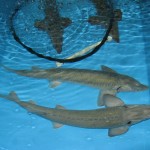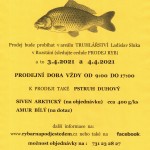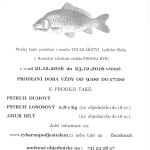Work on Criteria: Focus on conditions (machine time, ray strength, target polarization, an such like
Databases: Database host was treated by SpinQuest and typical pictures of one’s database content was kept as well as the gadgets and files expected due to their recuperation.
Diary Courses: SpinQuest uses an electronic logbook program SpinQuest ECL that have a database back-end handled of the Fermilab It department plus the SpinQuest cooperation.
Calibration and Geometry databases: Powering conditions, and also the sensor calibration constants and alarm geometries, try stored in a database in the Fermilab.
Research application source: Studies analysis software program is set-up inside SpinQuest reconstruction and you may data bundle. Contributions into the bundle are from multiple source, college https://n1-casino.co/au/ or university organizations, Fermilab users, off-website lab collaborators, and third parties. In your neighborhood written application origin password and construct files, plus benefits regarding collaborators is stored in a difference management system, git. Third-team software is managed because of the software maintainers under the supervision of the analysis Operating Classification. Source code repositories and you can managed 3rd party bundles are constantly backed to the newest School out of Virginia Rivanna stores.
Documentation: Paperwork is obtainable on the web when it comes to blogs both managed because of the a material administration system (CMS) such a Wiki during the Github or Confluence pagers or as the fixed sites. This article are backed up continually. Almost every other documentation on the application is distributed via wiki pages and consists of a mixture of html and pdf files.
SpinQuest/E10twenty three9 is a fixed-target Drell-Yan experiment using the Main Injector beam at Fermilab, in the NM4 hall. It follows up on the work of the NuSea/E866 and SeaQuest/E906 experiments at Fermilab that sought to measure the d / u ratio on the nucleon as a function of Bjorken-x. By using transversely polarized targets of NH12 and ND3, SpinQuest seeks to measure the Sivers asymmetry of the u and d quarks in the nucleon, a novel measurement aimed at discovering if the light sea quarks contribute to the intrinsic spin of the nucleon via orbital angular momentum.
While much progress has been made over the last several decades in determining the longitudinal structure of the nucleon, both spin-independent and -dependent, features related to the transverse motion of the partons, relative to the collision axis, are far less-well known. There has been increased interest, both theoretical and experimental, in studying such transverse features, described by a number of �Transverse Momentum Dependent parton distribution functions� (TMDs). T of a parton and the spin of its parent, transversely polarized, nucleon. Sivers suggested that an azimuthal asymmetry in the kT distribution of such partons could be the origin of the unexpected, large, transverse, single-spin asymmetries observed in hadron-scattering experiments since the 1970s [FNAL-E704].
So it’s maybe not unreasonable to assume the Sivers features may differ
Non-zero viewpoints of one’s Sivers asymmetry had been counted inside partial-inclusive, deep-inelastic sprinkling tests (SIDIS) [HERMES, COMPASS, JLAB]. The latest valence upwards- and you may off-quark Siverse functions was basically noticed as comparable in size however, which have contrary indication. No email address details are designed for the ocean-quark Sivers services.
Among those ‚s the Sivers mode [Sivers] which signifies the newest relationship involving the k
The SpinQuest/E10twenty three9 experiment will measure the sea-quark Sivers function for the first time. By using both polarized proton (NHtwenty-three) and deuteron (ND3) targets, it will be possible to probe this function separately for u and d antiquarks. A predecessor of this experiment, NuSea/E866 demonstrated conclusively that the unpolarized u and d distributions in the nucleon differ [FNAL-E866], explaining the violation of the Gottfried sum rule [NMC]. An added advantage of using the Drell-Yan process is that it is cleaner, compared to the SIDIS process, both theoretically, not relying on phenomenological fragmentation functions, and experimentally, due to the straightforward detection and identification of dimuon pairs. The Sivers function can be extracted by measuring a Sivers asymmetry, due to a term sin?S(1+cos 2 ?) in the cross section, where ?S is the azimuthal angle of the (transverse) target spin and ? is the polar angle of the dimuon pair in the Collins-Soper frame. Measuring the sea-quark Sivers function will allow a test of the sign-change prediction of QCD when compared with future measurements in SIDIS at the EIC.







